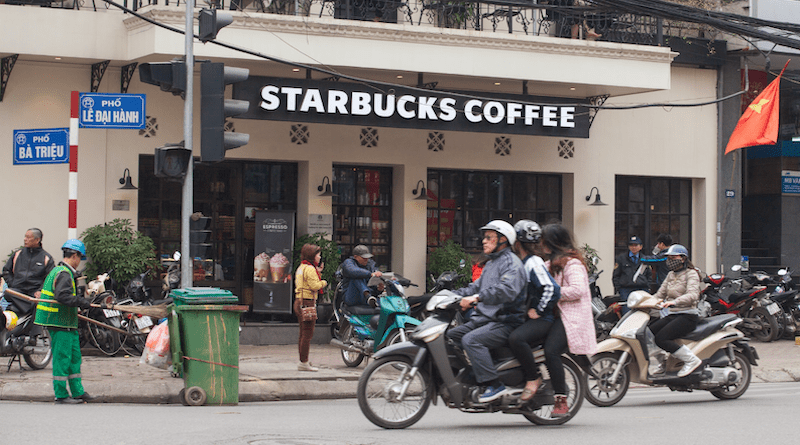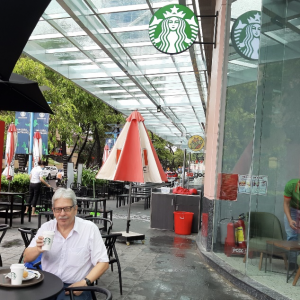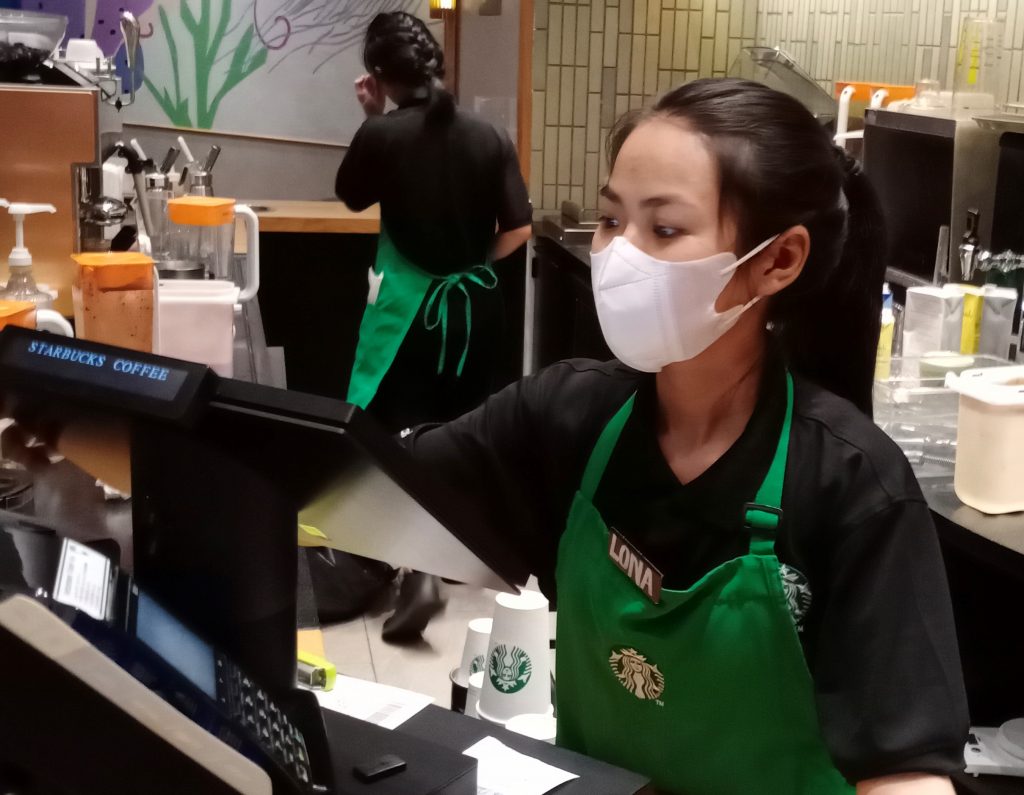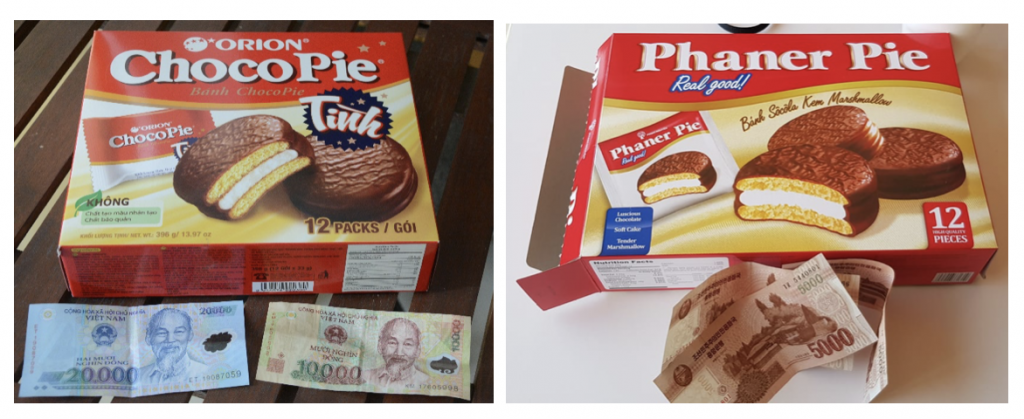Starbucks Is Pulling Out Of Vietnam, A Coffee Country: Was ‘Cultural Appropriation’ A Driving Factor? – OpEd
By Felix Abt
I lived and worked for some time in Africa. On occasion, I was given a traditional costume by the tribal chiefs when visiting villages and I would wear it for half a day to please my hosts. Had I not done so, my African staff made me understand, I would undoubtedly have caused offence. After that, I never wore it again, not out of concern for cultural appropriation, but because I felt ridiculous wearing it. For the same reason, I did not give my African friends mountain cowbells and traditional Sennenkäppi hats decorated with a Swiss cross and alpine flowers from my home country, Switzerland.
Recently, in the Swiss city of Zurich, a concert by an Austrian musician was canceled. The reason given was the artist was wearing dreadlocks and, as a white man, had thus committed the offense of cultural appropriation. Cultural appropriation has probably always existed, but only in recent years has it become such a ridiculously controversial topic in the pampered West, as if there were no bigger issues to deal with.
I am not aware that the Greeks were upset when the larcenous Romans appropriated their Doric column design in the first century BC, and which was used repeatedly in Western architecture in the following centuries. Human history is based on learning, borrowing, appropriating and sharing. There is no way to identify and separate all influences. If someone choses to overplay it, they risk looking arrogant or ridiculous. My personal rule of thumb is that it depends on whether or not the use of motifs from other cultures denigrates the culture they come from. So it depends on the context, and that might be difficult for those who want to make simplistic rules about the use of such motifs and impose them on others.
When the first Starbucks restaurant opened in the Vietnamese coastal town where I currently live, the Starbucks Corporation boldly claimed on its website that it was the “chief representative of the third wave of coffee culture in the United States.”
Until then, I didn’t know the U.S. considered itself to have a ‘coffee culture’. According to “World Coffee Research,” only Hawaii grows coffee: In 2020 producing just 38,000 bags of coffee beans. The new restaurant was no different from the Starbucks restaurants I’ve seen in many other countries.
The opening of a Starbucks restaurant more than a decade earlier in Seoul’s Insa-dong, a Korean street famous for its antique stores and well-preserved old restaurants, had impressed me a lot more. Not for the siting of the chain in this culturally traditional area, but for the reaction of the residents, who were quick to protest and try to force its closure.
Starbucks was obviously taken aback by this stance, but did bow to the popular pressure. The restaurant was transformed into a more traditional Korean outlet. Even the uniforms of the employees were changed and, significantly, the logo was given a Korean design – which was globally unique at that time. The united protest of local residents did not lead to the closure of Starbucks, but the ‘Koreanization’ of the American multinational company, called “su-ta-bak-su” in phonetic Korean, was indeed an amazing achievement.
The most famous Starbucks restaurant in Vietnam was established in the legendary Rex Hotel in Saigon, whose “Rooftop Garden Bar” was the scene of the infamous American press conferences in Saigon during the Vietnam War (or the “American War” as it is known in Vietnam), known as the “Five O’clock Follies.”
Decades later, the Starbucks Rex became a popular meeting place, often so crowded, especially on weekends, that it was difficult to get a seat. After eight years, it closed for good.
Starbucks in my smaller Vietnamese residential town, also attracted a large number of curious people when it opened, but as time progressed they became fewer and fewer. Now, like innumerable other Starbucks restaurants around the country, it is no more.
Cultural appropriation or a sensitive move by Starbucks?
The real name of this employee at a former Starbucks restaurant in a provincial Vietnamese capital is not “Lona.” Vietnamese employees wore name tags with Western names instead of their Vietnamese names.
The reason: It is easy to mispronounce a word in multitonal Vietnamese by a non-Vietnamese, drastically changing its meaning. For example, Phúc is a common male name. It means “luck, happiness, blessings”. However, when attempted by a non-Vietnamese speaker it may well come out as a potentially offensive expletive!
Is cultural appropriation universal?
This appears to be Vietnamese appropriation of Korean culture: Choco Pie, the popular snack cookie from leading South Korean food manufacturer Lotte, as sold in Vietnam (left) and the Vietnamese imitation sold by enterprising Vietnamese business people in North Korea (right). The South Korean original may not be sold in North Korea until further notice.
Ironically, the Vietnamese might argue that the founder of Lotte appropriated German culture when he named his company after the character Lotte from Goethe’s novel “The Sorrows of Young Werther.” The Goethe devotee even erected a monument to his idol in front of his corporate headquarters in Seoul. But they would not challenge the Lotte Group in this regard because Asian pragmatists are not eager to adopt this detached Western thought pattern or the cultures that certain Westerners claim to be trying to protect.
In contrast, South Korean politicians and media were outraged when a Korean Chinese wore a traditional Korean hanbok during the opening ceremony of the Beijing Winter Olympics, along with representatives of dozens of other ethnic minorities, including Uyghurs, who also wore their costumes there, and accused China of cultural appropriation. Imagine the huge outrage if China had not allowed them to wear their traditional costumes: politicians and mainstream media would have accused the country of cultural genocide. Or maybe these South Koreans are closet Maoists: ethnic minorities, including Korean Chinese, all accused of spying for foreign governments, had to hide their ethnic culture and were forced to wear gray Mao suits from the 1950s until the mid-1970s, when the madness of the Cultural Revolution ended.
On the other hand, South Korean politicians and media do not protest against their government when it encourages foreigners to wear hanboks in its cultural institutions.
A coffee superpower emerges
Over the past 30 years, Vietnam has become the world’s largest producer of Robusta coffee. This variety is bitter, unlike mild Arabica, and is used mainly for instant coffee, espresso and as a filler in certain blends of ground coffee. After Brazil, the Southeast Asian country is the second largest coffee producer in the world. Since its introduction by the French colonialists in the mid-19th century, coffee quickly caught on and today enjoys widespread popularity among the Vietnamese.
It is therefore not surprising that the country has a well-established coffee culture with a unique menu that can be found almost nowhere else in the world, and certainly not in Starbucks’ country of origin. My favorite coffee, Cà phê trứng (egg coffee), immediately comes to mind. Vietnamese yogurt coffee is also a rather unusual combination of black coffee – traditionally made with a Phin filter – yogurt, condensed milk, and ice, sometimes lemon juice, with the coffee infused last.
The most famous and popular coffee is Vietnamese iced coffee (Cà phê sữa đá), a drink that combines strong coffee, condensed milk and ice. To brew it, the unique Vietnamese phin filter is used, which consists of a round perforated plate, a brewing chamber, a perforated insert, and a stainless steel or aluminum lid that keeps the heat of the water in the phin, from where it slowly drips through the filter into the cup or glass.
Why did Starbucks fail in Vietnam?
The company lacked adaptability, such as using the wrong beans (Vietnamese prefer the stronger Robusta to the milder Arabica) and a menu that was too limited. Moralists in the West might absurdly interpret this as a welcome rejection of cultural appropriation.
In addition, the company faced stiff local competition, led by the Highlands Coffee chain, in which the Philippine fast-food chain Jollibee now holds a dominant 50% stake. The competition offered more variety, lower prices and an atmosphere more appealing to younger Vietnamese customers in particular.
Why is Starbucks doing better in neighboring China, where it currently has a sizable market share of about 36%? China is not a coffee producer with a long-standing coffee culture. Moreover, Starbucks has made efforts there to adapt its menu and prices to local customers. But local coffee chains like Luckin Coffee are also gaining market share. Many American companies have failed in China (Google, Microsoft, Amazon, eBay, etc.) and many American and other foreign companies will also fail in Vietnam. Amateur philosophers, dreamers of another world and “woke” fanatics may speculate that it has something to do with cultural appropriation.
But companies that make their decisions according to rational considerations, that take into account the needs of their customers and do not act on the basis of moral arbitrariness, and that also have to apply basic business management methods, know that the reasons for their failure are very likely to be the following: Too little or too much availability and/or use of resources, too little or too much adaptation to local cultural conditions – again, some in the West would say cultural appropriation, which is not an issue in Vietnam, China or Korea – too little or too much foreign management, too little or too much engagement with government bureaucracy, and scaling too fast or too slow. And that’s about it.
Pictures courtesy: Felix Abt and Edouard George
*Felix Abt is a Swiss entrepreneur active in Asia, currently based in Vietnam, and author of the book “A Capitalist in North Korea: My Seven Years in the Hermit Kingdom.”







Cancel culture, including the suppression of “cultural appropriation” — a witch hunt by self-appointed moral arbiters of speech and would-be inquisitors — has become the boutique activism of liberal elites and their mainstream media in the West in recent years. Once they control what people say, they control what they think. To this end, they systematically wage a smug, self-righteous crusade and campaign of moral absolutism and totalitarianism.
Fortunately, Asian pragmatism, not least in the business world, tends to buck this nefarious trend, as the author of this article has explained so well. If this century is to be the “Asian century,” then there is reason to hope that this dangerous arrogance can be rolled back.